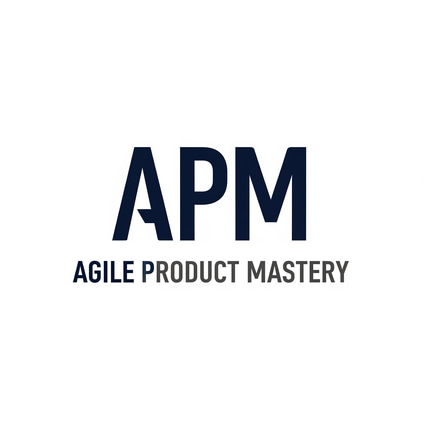Your Product Backlog Is a Graveyard — Fix it in 4 Steps
Drowning in a bloated backlog? Learn 4 proven steps to clean it up, prioritize value, and take control of your agile product backlog once and for all.
Written by: Matt Gregory - Founder Agile Product Mastery
4/5/20253 min read


Stepping into the role of Product Owner, we inherit a neat, prioritized backlog, right? In reality we inherit... Chaos!
We’re talking hundreds of user stories, scattered requests, and years of carryover — a digital dumping ground of every feature, enhancement, and idea anyone ever had.
Every stakeholder had a “must-have.” Every item was labeled “urgent.” The list kept growing. The team felt paralyzed, overwhelmed, and uncertain about where to start.
Sound familiar?
You’re not alone. Backlog bloat is very common particularly in big, sophisticated settings like financial services, corporate IT, or legacy systems. The truth is, though, that the Backlog will rule you if you cannot manage it!
And that’s a fast track to team burnout, stakeholder frustration, and wasted delivery cycles.
The Mindset Shift: From Feature Collector to Value Curator
Let’s be clear: a backlog isn’t a wishlist. It’s not a dumping ground. It’s a strategic tool.
Your backlog should answer one question:
“What should we build next to deliver the most impact?”
That’s it.
You’re not a librarian organizing feature books. You’re a curator of value... constantly filtering noise, sharpening focus, and aligning delivery to outcomes.
So how do you take control of your backlog?
Step 1: The Mindset Shift - From Feature Collector to Value Curator
Let’s be clear: a backlog isn’t a wishlist. It’s not a dumping ground. It’s a strategic tool.
Your backlog should answer one question:
“What should we build next to deliver the most impact?”
That’s it.
You’re not a librarian organizing feature books. You’re a curator of value — constantly filtering noise, sharpening focus, and aligning delivery to outcomes.
So how do you take control of your backlog?
Step 2: Use Data, Not Opinions
In your first few months, you might have heard plenty of strong opinions from stakeholders:
“We absolutely need this feature!”
“This is critical for the desk!”
But when we dig into usage data, the story changes. You might find some of the most requested features were barely used. Others, long ignored, might have had high usage and strong impact metrics.
Data doesn’t lie. It helps you separate desire from demand.
Tools you might find useful:
• Heatmaps and usage tracking
• Operational incident logs
• Time-to-complete metrics
• Business case quantification
Step 3: Force Trade-Offs, Say No to Say Yes
Here’s the harsh truth: You can’t build everything.
Saying yes to every feature request sounds politically safe. But it’s strategically dangerous.
Every “yes” is a “no” to something else — something that may drive real value.
So get into the habit of asking:
“If we build this, what don’t we build?”
This forced stakeholders to make trade-offs. When faced with direct choices, many “must-haves” became “nice-to-haves.”
A good way to do this is to introduce a bi-monthly prioritization forum where business leads actively vote on priorities. This creates alignment and accountability.
Step 4: Purge those Backlog Zombies
Every backlog has them: items that have been sitting untouched for 12+ months, slowly rotting.
If no one’s touched it, championed it, or revalidated it in a year, it’s probably not important.
Run a “Backlog Cleanse” every quarter: Anything over 12 months old without clear sponsorship or impact was either archived or deleted.
Result?
A product owner at a well-known bank cut their backlog from 400+ items to under 80. The team finally had clarity on what mattered.
Bonus Tips for a Healthy, High-Impact Backlog
1. Create Thematic Buckets
Group work into themes or Objective Key Results (OKR) aligned initiatives. This adds structure and helps stakeholders understand the “why” behind prioritization.
Examples:
• Customer onboarding improvements
• Risk and compliance uplift
• Automation and operational efficiency
• Platform modernization
2. Make It Visual
Use a roadmap or Kanban-style visualization to show what’s in play, what’s next, and what’s on ice. It reduces constant requests for updates and creates shared understanding.
3. Revalidate Regularly
Build a habit of quarterly backlog reviews. Invite business leads, tech, and ops. Ask:
What’s still relevant?
What’s moved up in urgency?
What can we drop?
Backlogs should evolve, not accumulate dust.
What you need to know is Backlog Triage is Product Leadership
Anyone can manage a list. But true Product Owners and Product Managers lead through prioritization.
It’s not about being a gatekeeper. It’s about being a strategic enabler — delivering what matters, when it matters, to who it matters most.
When you stop being a backlog babysitter and start being a value driver, everything changes.
So remember...
Filter ruthlessly: Revenue, risk, and efficiency are your north stars.
Let data guide you: Gut feels are fine, but validate with real metrics.
Say no more often: Trade-offs are where real strategy lives.
Purge those zombies: Archive stale requests and clean house.
Reinforce transparency: Visuals and stakeholder forums build trust.
Take Action Now
Audit your backlog today. How many items are over 6 months old? How many are backed by data?
Schedule a Backlog Cleanse session. Invite your squad. Make it a ritual.
Reframe your mindset — from list manager to impact driver.
Ready to master your Product Owner journey?
Grab your copy of Agile Product Mastery: The Product Owner's Playbook to Strategy, Execution & Influence and take your skills to the next level.
© Agile Product Mastery — Build a career that scales. Not one that burns out.
Powered by Baltimore Advisory Pty Ltd — ABN 97 678 312 475 — All rights reserved
Follow us on LinkedIn
